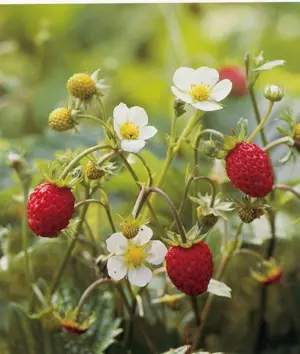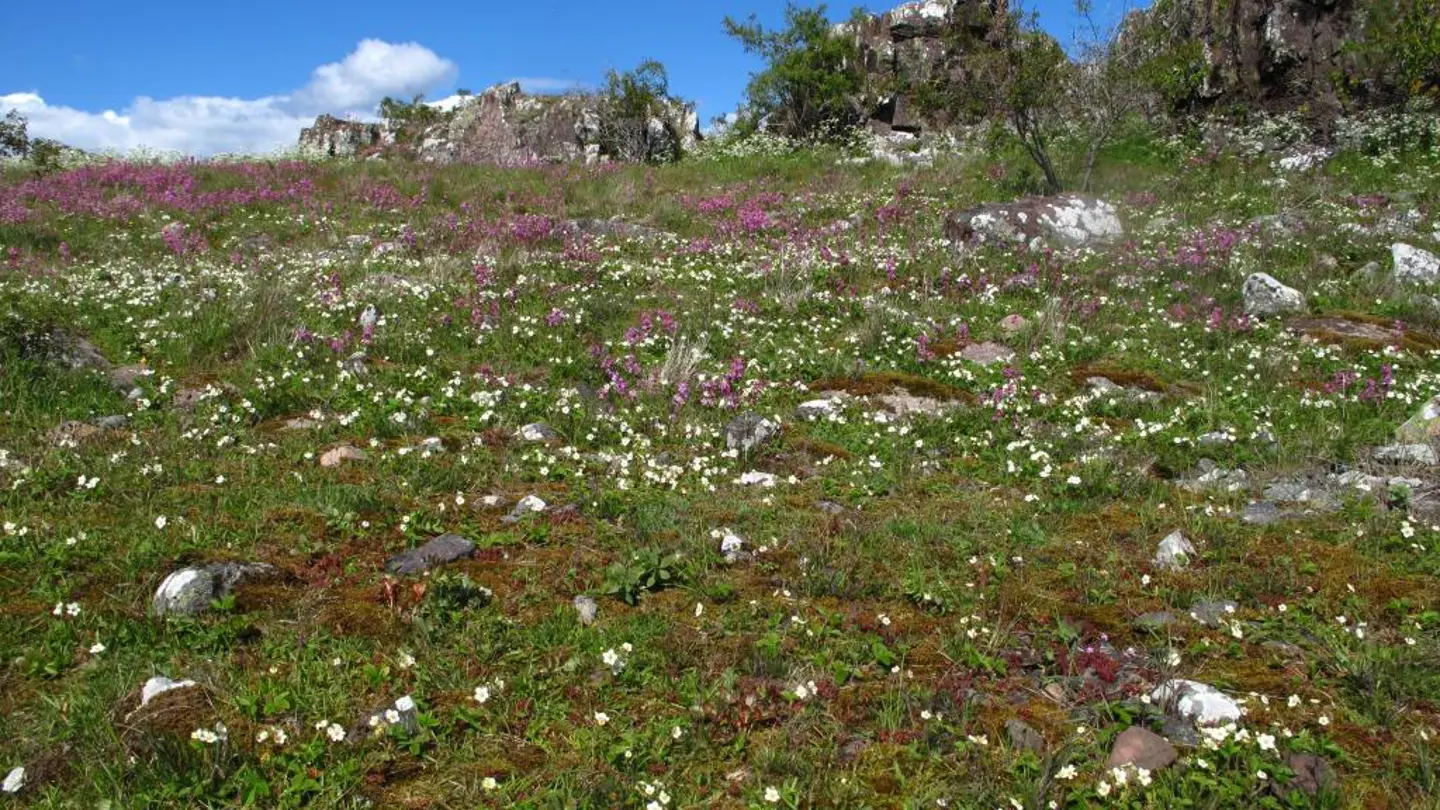
Strawberry (Fragaria sp.)
- Hem
- Projekt
- Vilda kulturväxtsläktingar
- Växtporträtt
- Strawberry (Fragaria sp.)
The strawberry (Fragaria sp.) is one of the most popular berries on Nordic tables. The wild strawberries have been harvested in the wild and highly appreciated for centuries, not only for the sweet taste, but as a cure for illnesses. Cultivation of large fruited strawberries, based on strawberry species originating from the New World started in the beginning of the 19th century.
Text by Åsmund Asdal and photos by Finn Måge.

The great Nordic botanist Carl von Linné (1707 – 1778), died before the large fruited cultivated strawberries came into production in Europe. He knew only wild strawberry species, mainly woodland strawberry (F. vesca L.), – and appreciated these also as medicine, both berries and dried leaves.
The strawberries that we cultivate today (F. x ananassa) originate from two wild species growing in America: Virginia strawberries (F. virginiana) from eastern North America and Chilean strawberries (F. chiloensis) from western South America. These two Fragaria species were introduced to Europe during the 18th century, and the hybridization into the new species garden strawberry F. x ananassa occurred towards the end of the 1700s. Commercial production of strawberries based on the new hybrid started in small scale in the beginning of 1800s.
Three wild strawberry species
In addition to the woodland strawberries (F. vesca), the cultivated strawberries have two other closely related species in the Nordic wild flora: creamy strawberries (F. viridis Weston) and musk strawberries (F. moschata Weston). Both Virginia strawberries and garden strawberries can be found in wild flora as garden escapes.
The woodland strawberries are the most widespread wild strawberry species and can be found over all Nordic territories except for Svalbard and the Faroe islands. Creamy strawberries and musk strawberries are found in the warmer parts of the region. Musk strawberries were cultivated in Europe before the American species arrived, and findings of musk strawberries in the wild and semi wild flora are often garden escapes. Such populations are often found without berries, due to the fact that the plants are not self-fertile and populations originating from cultivated plants often have plants of one gender only.
Of the wild species, woodland strawberries are the most common and also considered to have the best fruit quality. However, if you are lucky to find mature berries on a musk strawberry plant, they are very delicious as well. Creamy strawberries have a nice acidic flavor, but not the typical strawberry aroma. Creamy strawberries can sometimes ripen without becoming red.

Varieties for Nordic production
As strawberries are the most cultivated berry, breeding of new varieties for Nordic growing conditions is still taking place in the Nordic countries. Nordic official variety lists comprise several strawberry varieties, both imported varieties and varieties resulting from breeding in the Nordic countries. The Norwegian variety list contains 25 strawberry varieties, a majority from domestic breeding, but also varieties from Dutch, French, German and US breeders.
Researchers and plant breeders are always searching for genes that can improve the cultivated varieties, and this is also the case for strawberries. In addition, the woodland strawberry has shown to be a good model plant for investigations on how cultivated strawberries and also other berries are adapted and how they appear under different growing conditions.
A model plant
The genetics and ploidy level of cultivated strawberries cause some difficulties for researchers looking for inherited adaptive traits. Garden strawberries (F. x ananassa) and its ancestors Virginia strawberries (F. virginiana) and Chilean strawberries (F. chiloensis) are octoploid (2n=8x=56), while woodland strawberries are diploid (2n=2x=14) which make it more easy to study relations between genes and traits.
For cold Nordic climates, it is important to find winter hardy varieties. Normally, flowers on strawberry plants are induced and start to develop in the autumn. A Norwegian study, supported by the Norwegian Genetic Resource Centre, on plants samples growing at different altitudes and latitudes by Heide and Sønsteby (2007) showed that floral induction in woodland strawberries is managed through complicated interactions between photoperiod and temperatures.
A certain genotype delaying the development of cold-sensitive floral organs until the spring was found in Alta, in the county of Finnmark far north in Norway. This is the only known genotype of strawberries that needs vernalisation for flowering, a trait that might be valuable for development of varieties for cold climates and/or varieties maturing late in the season.
The results also underline that unique individuals of crop wild relative species found in wild flora can possess genes that are or could be valuable for agriculture and food production.
Referenser
Heide, O.M., Sønsteby, A. 2007. Interactions of temperature and photoperiod in the control of flowering of latitudinal and altitudinal populations of wild strawberry (Fragaria vesca). Physiologia Plantarum 130: 280-289.


